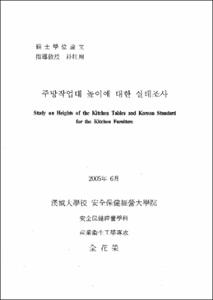주방작업대 높이에 대한 실태조사
- Files in This Item:
-
-
Download
 000000556988.pdf
기타 데이터 / 966.11 kB / Adobe PDF
000000556988.pdf
기타 데이터 / 966.11 kB / Adobe PDF
-
Items in Repository are protected by copyright, with all rights reserved, unless otherwise indicated.
 000000556988.pdf
기타 데이터 / 966.11 kB / Adobe PDF
000000556988.pdf
기타 데이터 / 966.11 kB / Adobe PDFItems in Repository are protected by copyright, with all rights reserved, unless otherwise indicated.